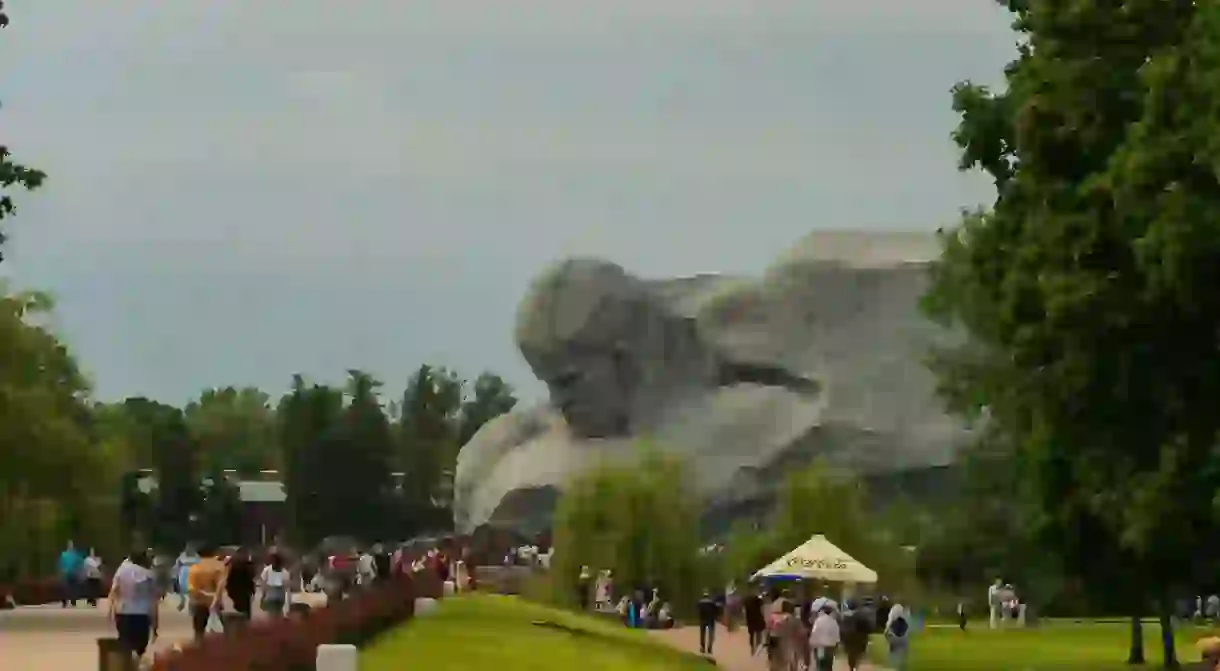Russia's Most Important War Memorials

A strong sense of nationalism, a history wracked with conflict and a healthy respect for the arts and public sculpture, make World Cup 2018 host nation Russia home to many powerful war tributes. Here are some of Russia’s most moving war memorials that stand as testament to past conflicts.
Did you know – Culture Trip now does bookable, small-group trips? Pick from authentic, immersive Epic Trips, compact and action-packed Mini Trips and sparkling, expansive Sailing Trips.
WWII War Memorial, Moscow
Four bronze soldiers stand representing the allied powers of Britain, France, the Soviets and America against the Nazis. While the West is often portrayed as the World War II victors who defeated the Nazi army, here Russians are the heroes of the Great Patriotic War, the Russian title for the same conflict. By 1943 the Soviet Union had lost over five million soldiers, yet still managed to come out of the war victorious in 1945 – but at a significant expense. It is estimated that close to 26 million Soviets died during the war, including around 11 million soldiers, while the Nazi army lost about three quarters of their army when engaged in Soviet combat.
The Motherland Calls, Volgograd

Volgograd was the site for the Battle of Stalingrad, one of the most brutal conflict sites of World War II. Around 1.8 million people were killed, injured or captured during the fighting which engaged a little over two million soldiers in the warfare. The battle, which lasted just over five months, was a major loss for the German military, and weakened their resources and power significantly against other armies as well. To commemorate war efforts and costs, an immense statue of a sword wielding woman stands high on top of a hill. At the time of being built it was the tallest statue ever, and still is the tallest statue in Europe as well as being an epic depiction of the efforts undertaken by the Red Army to defeat the Germans.
WWII Holocaust Memorial, Moscow
A harrowing memorial that depicts the human cost of war, The Tragedy of People sombrely conveys the human cost through a row of emancipated people, lined up like a row of dominos, that morph into tombstones. Personal belongings – dropped teddy bears, broken glasses, and the like – are scattered around as if dropped by their owners, who also morph into indiscernible entities. Not just referring to Nazi persecution of Jewish people, the Russian Holocaust also refers to the Nazi victimisation of Soviet prisoners of war, Poles, Slavs and socialists as well. By the end of WWII, close to 3.5 million Soviets lost their lives in German war prisons, and near to six million Jews were killed.
Black Tulip, Yekaterinburg
Named after the air craft carrier that transported bodies of deceased Soviet soldiers back home during the Soviet-Afghan War, this works sees a lone soldier slump contemplatively with his weapon, exhausted and defeated. Etched on the pillars that give the memorial its name are the names of the Yekaterinburg local soldiers who died in the war that took up most of the 1980s, as well as in the Chechnya War, which followed in the 1990s . Some 620,000 soldiers served in the Soviet-Afghan War, which lasted nine years and saw around 14,500 of those soldiers die. The Chechnya War, which lasted two years, clocked up around 5,500 fatalities.
Courage, Brest (Belarus)

Not in Russia, but in a former Soviet state, this memorial sees a soldier’s furrowed brow stick out of an enormous slab of stone, starting at the ruins of the Brest Fortress, which was destroyed by a surprise Nazi attack in 1941. Over 30 metres (100 feet) high, with a hammer and sickle etched into the slab, it is part of several memorials that pay tribute to the war time atrocities. When the Nazis launched a surprise attack, civilians, including children were also holed up in the fortress, along side the soldiers. The town’s water supply was cut off during the attack as well, in efforts to lure people out to shoot at while attempting to collect supplies.
WWII War Memorial, St. Petersburg
Nearly a third of St Petersburg died due to conflict and the subsequent famine during the Siege of Leningrad, which saw the city shut off from supplies for nearly two years. Another conflict between the German forces, it is regarded as one of the most destructive sieges in history. With insufficient rations, desperate people resorted to eating pets and animals, and even a few despairing residents turned to cannibalism. In the heart of St Petersburg, the city’s multifaceted and sorrowful WWII memorial reflects the hardships of the people during this time. A huge obelisk hulks over the centre sculpture piece where soldiers look on as a woman holds her emancipated child and another cradles an ill man.
Little Earth, Novorossiysk

This memorial is a tribute to another brutal battle between the Red Army and the Germans during WWII, when German and Romanian forces took the south-easterly city in September 1942. A unit of Soviet sailors commenced an attack on the forces at the beginning of 1943, and the city was finally liberated by the Red Army, a year after it was occupied. On the site where the sailors defended the city, known as Malaya Zemlya or Little Earth, a colossal memorial pays tribute to the sailors efforts that enabled the Soviet Union to retain power over Novorossiysk’s port, which was key in transporting military supplies to the State.e













